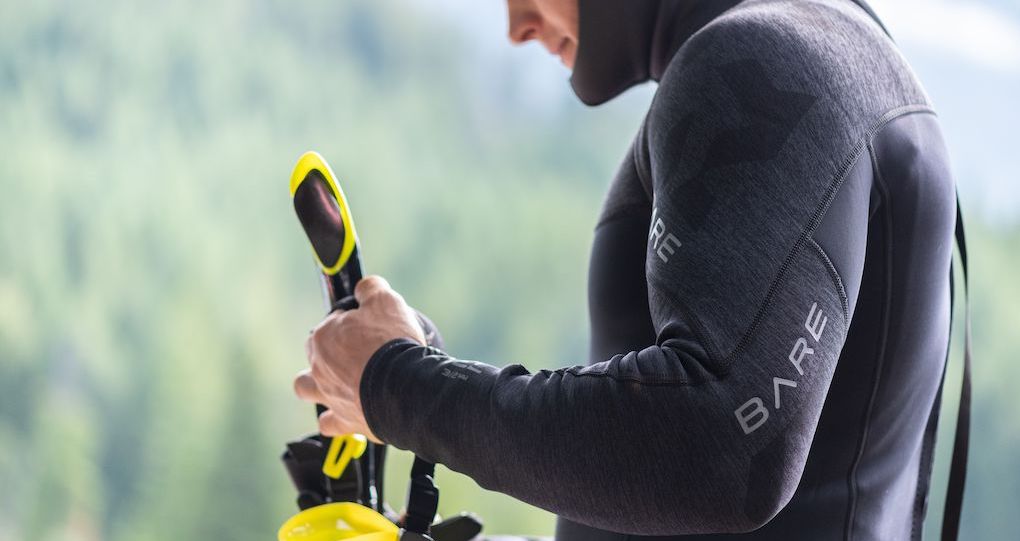The day has finally come and you have a brand new wetsuit from BARE. Your old suit performed well and lasted for years of sustained use. But in all honesty, like most people, you probably didn’t maintain it as well as you could have.
Of course, it’s only human to toss your suit in the truck bed after a long day in the water—we get it! That said, there are some very simple things you can do to prolong your suit’s gearspan, and save some dough in the process.
BARE suits generally use various types of laminates that produce different degrees of stretch. Full-Stretch—or 4-way stretch—is used in our Reactive, Evoke and Nixie Ultra suits. Progressive Full-Stretch is used in our Velocity series suits, and Standard stretch neoprene is used in our Sport series’ Revel and Elate wetsuits.
Maintaining your suit and showing it some love from time to time will multiply the number of days that you can enjoy it. Also, many suits become more comfortable after prolonged use and so it’s nice to maximize the amount of time we get to share with our wetsuits in those “golden years” of their time in action.
Find below a quick list of some no-brainer things you can do to care for your suit. After all, it takes care of you—it’s only fair that you take care of it.
1) Understand your suit
Most wetsuits are made from a material called neoprene. In terms of composition, neoprene is essentially full of closed-cell foam, which restricts heat loss and thermal transmission away from the body. To boot, because the neoprene’s closed-cell foam is full of gas molecules, neoprene also provides incredible buoyancy—so much so, that most surfers skip the PFD and rely exclusively on their wetsuit for flotation.
Far from just a piece of thermal insulation, your suit helps regulate your body temperature and literally keeps you afloat, so maintaining your neoprene is not just a matter of performance, but also safety.
2) Keep chlorine off your suit
We know it’s tempting to don your new wetsuit in the pool in the meantime until you can get it in the ocean, but try and resist this urge. Chlorine is one of the most corrosive substances to neoprene and should be avoided at all costs. To be fair, it won’t destroy your suit overnight, but avoidance is a good practice to be in the habit of.
If you have exposed your wetsuit to chlorine, be sure to thoroughly rinse it with fresh water.
3) Watch for snags when donning/doffing
It sounds obvious, but it’s extremely common for suit damage to occur during the donning process. Wetsuits—especially when they’re new—can be tough to get on. This rigidity makes it tempting to aggressively yank and pull while putting on your new suit. Try to avoid this.
Also be aware of the snags you might introduce while putting on your suit. Long finger/toenails, piercings and rings should all be minded so as to avoid snags, rips and tears. Although it’s often easier to get your suit off than it was to get on, it’s also wise to be mindful of snags when removing your suit, too.
If rips or tears do occur, AquaSeal can be used to treat and seal up the damage. But before doing anything, be sure to consult your suit’s individual instructions.
4) Rinse off the saltwater
Saltwater is far less corrosive than chlorine, but when left un-rinsed, both will dry out your neoprene suit and cause it to decay faster than it would under proper maintenance. For best results, after a good session in the saltwater, let your suit soak in warm fresh water for 20-30 minutes, then hang it to dry with the back completely unzipped.
It’s OK if you can’t always soak your wetsuit, but generally speaking, it’s a great habit to adopt.
For more information, visit our webpage about wetsuit care.











